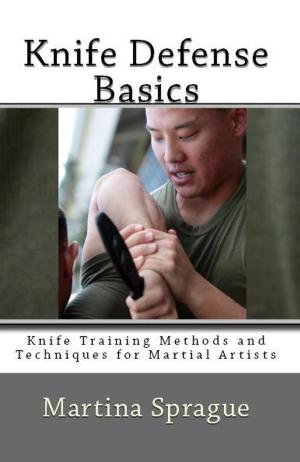Chinese Swords: The Evolution and Use of the Jian and Dao
Knives, Swords, and Bayonets: A World History of Edged Weapon Warfare, #5
Nonfiction, History, Military, Weapons| Author: | Martina Sprague | ISBN: | 9781386565314 |
| Publisher: | Martina Sprague | Publication: | March 14, 2018 |
| Imprint: | Language: | English |
| Author: | Martina Sprague |
| ISBN: | 9781386565314 |
| Publisher: | Martina Sprague |
| Publication: | March 14, 2018 |
| Imprint: | |
| Language: | English |
Edged weapons became a mainstay in early Chinese history and through the Ming (1368-1644 CE) and Qing (1644-1912 CE) dynasties. The Chinese used swords to settle personal disputes, win military battles, and indicate one’s social and martial status through the end of the Imperial Period.
China, a country of vast resources, developed its metal and iron industry earlier than its western counterparts and achieved great advances in metallurgic science. There were two classes of Chinese swords: the straight double edged jian and the slightly curved single edged dao. The jian proved effective mainly for chivalry combat in the Zhou Dynasty (1045-256 BCE), and was later carried by the nobility as a symbol of status. Military officers, perhaps because of their association with the nobility, seem to have preferred the double edged jian over the dao. The dao proved useful mainly in cavalry combat, which started to gain popularity in the Western Han Dynasty (202 BCE-9 CE). The dao was a true soldier’s weapon that required more attention to fighting skill than finesse.
This book follows a chronological path through China’s dynasties, exploring sword design and swordsmanship. The concluding remarks recap the long history of the sword with focus on the philosophical value one assigned the weapon.
Edged weapons became a mainstay in early Chinese history and through the Ming (1368-1644 CE) and Qing (1644-1912 CE) dynasties. The Chinese used swords to settle personal disputes, win military battles, and indicate one’s social and martial status through the end of the Imperial Period.
China, a country of vast resources, developed its metal and iron industry earlier than its western counterparts and achieved great advances in metallurgic science. There were two classes of Chinese swords: the straight double edged jian and the slightly curved single edged dao. The jian proved effective mainly for chivalry combat in the Zhou Dynasty (1045-256 BCE), and was later carried by the nobility as a symbol of status. Military officers, perhaps because of their association with the nobility, seem to have preferred the double edged jian over the dao. The dao proved useful mainly in cavalry combat, which started to gain popularity in the Western Han Dynasty (202 BCE-9 CE). The dao was a true soldier’s weapon that required more attention to fighting skill than finesse.
This book follows a chronological path through China’s dynasties, exploring sword design and swordsmanship. The concluding remarks recap the long history of the sword with focus on the philosophical value one assigned the weapon.















